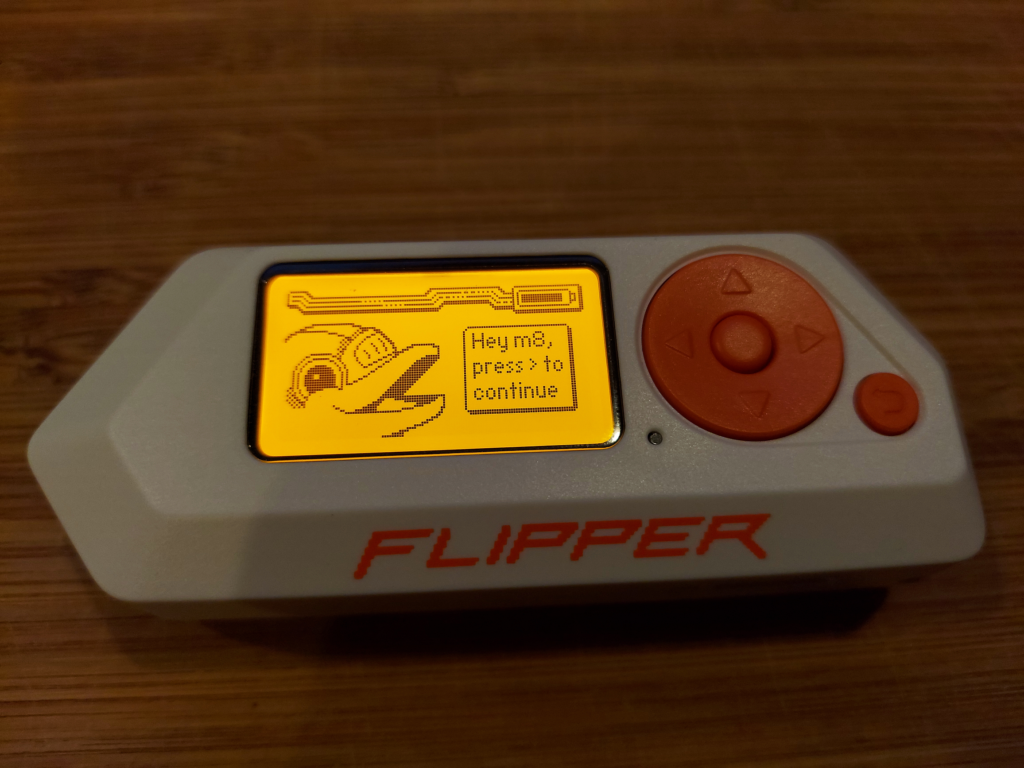Digital technology is ubiquitous in modern life. Electronic signs, traffic lights, wireless access points, pet microchips, contactless payment, ID, and access cards are as familiar to us as a Swiss Army Knife would have been, in earlier times.
So it’s not too surprising that a modern Swiss Army Knife-like device would be something that can interact with this technology on its own terms, making it more accessible. Or at least more hackable. Most of these devices use either some kind of wireless technology (RFID, NFC, Bluetooth, WiFi, infrared, or more proprietary VHF/UHF protocols.) Wouldn’t it be cool to have a device that can interact with most of these?

The Flipper Zero is just such a device, packaged in a relatively innocent-looking Tamagotchi-like housing that somewhat resembles a 1990s electronic game, or maybe an older mp3 player. Unlike these vintage devices, however, it contains built-in hardware to interact with NFC, RFID, Bluetooth, Infrared, One-Wire, and sub-1GHz RF.
There’s a gamelike (or Tamagotchi-like) aspect, too. The Flipper Zero is named both for its ability to “flip bits” in targeted devices, as well as its dolphin mascot. Most features of the device feature a friendly dolphin character (with a unique, per-device name) to guide you through their use, or at least appear in amusing cartoons on the screen as features like NFC card emulation are put to use. Interact with your Flipper daily, and your dolphin will remain “happy,” according to the directions.
Here are some of the things a Flipper Zero can do:
- Scan pet microchips: I was able to verify that my cat’s microchip is in place, functioning, and registered to me. Flipper could also be useful in scanning local stray cats for microchips. (Newer microchips can sense the animal’s temperature, too.)
- Clone and emulate payment, ID, and access cards: The Flipper can read RFID and NFC information, whether directly from a card or from an emulating device (I was able to copy my card information from my Garmin Venu watch, as well as credit, ID, and transit cards.) Flipper can then “play back” these IDs to a reader. (I’ll have to try this on the door card readers and NFC vending machines at work.)
- Emulate a USB keyboard and/or mouse via the USB cable. (This can be used to automatically install applications on a PC that Flipper is plugged into.)
- Determine the frequency, and often the protocol, for wireless devices using sub-1GHz RF.
- Play back DTMF tones (useful for phreaking, if you have a time machine, I guess.)
- Act as a rudimentary oscilloscope or logic analyzer
- Test servomotor devices, which use 50Hz pulse-width signaling to control angles/speeds
- …and the usual CPU tricks: there’s a Snake game, dice emulator, Conway’s Life…
With an add-on ESP32-based WiFi dev board, the Flipper Zero can also interact with WiFi networks to access the Internet and/or do basic security testing.
As with all useful tools, Flipper has the potential to be used for legitimate purposes as well as more nefarious ones. It’s been called a “hack tool,” which is accurate enough. Use it for white-hat “hacking” — meaning learning more about good network security practices. Like a knife, Flipper also has the potential to help you get into trouble. Be a Jedi, not a Sith.

